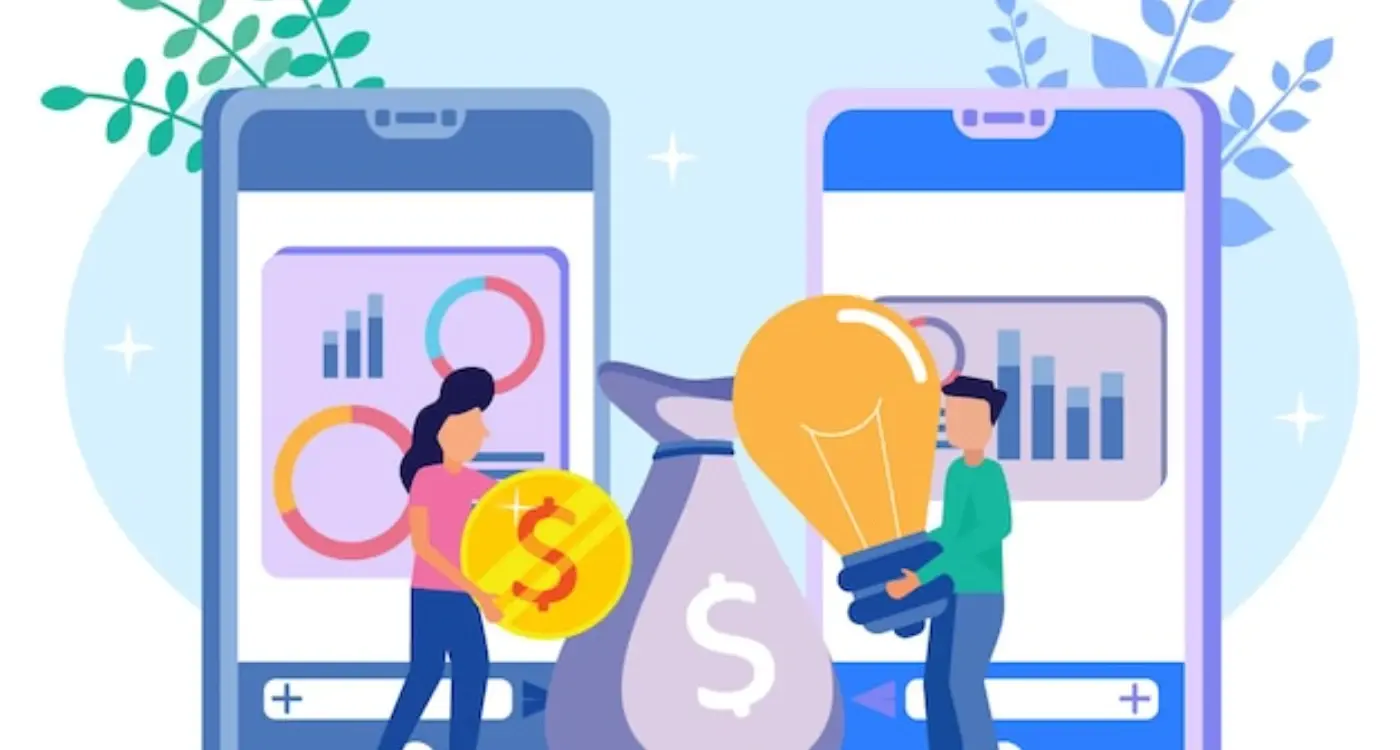How Do You Price Your App Without Losing Money?
Most app developers lose money on their first app—not because their idea was bad, but because they priced it wrong from the start. I've watched brilliant apps with thousands of downloads generate less revenue than a decent coffee shop makes in a week. Why? Because their creators never figured out the pricing bit properly.
The thing is, pricing your app isn't just about slapping a number on it and hoping for the best. It's about understanding your users, your market, and honestly—what your app is actually worth to people. I've seen developers charge £4.99 for apps that should be free, and give away apps that could easily support subscription models worth hundreds of pounds per user each year.
The biggest mistake isn't charging too little or too much—it's not having a clear reason for your price in the first place
Here's what really gets me: most people think app pricing is straightforward. Pick a model, set a price, job done. But after years of building apps across every industry you can think of, I can tell you it's one of the most complex decisions you'll make. Your pricing strategy affects everything—user acquisition costs, retention rates, even which features you should build first.
This guide will walk you through the real-world approach to pricing that I use with my clients. We'll cover the models that actually work (and the ones that don't), how to test your pricing without tanking your downloads, and most importantly—how to make sure your app generates enough revenue to keep the lights on and fund your next big idea.
Understanding Your App's True Value
Here's the thing—most people think about app pricing completely backwards. They look at what competitors are charging or just pick a number that feels right. But that's not how you build a sustainable app business, and honestly, it's how you end up losing money fast.
Your app's true value isn't what it costs to build or what you think its worth. It's the value it creates for your users. I mean, think about it—people pay £5 for a coffee that costs 20p to make because of the value they get from it. Same principle applies to your app.
The real question you need to ask is: what problem does your app solve and how much is solving that problem worth to your users? If your fitness app helps someone lose weight and feel confident, that's potentially worth hundreds of pounds to them. If your productivity app saves a business owner two hours a week, you can calculate exactly what their time is worth.
Calculating Real User Value
Start by identifying the specific outcomes your app delivers. Then work backwards from there. Here are the key areas to consider:
- Time saved for your users (calculate their hourly rate)
- Money saved or earned through using your app
- Convenience and reduced stress
- Entertainment value compared to alternatives
- Status or social benefits
One client I worked with had a scheduling app for hair salons. Instead of pricing it based on development costs, we calculated that it saved salon owners about 10 hours per week on admin work. At £25 per hour, that's £250 weekly value—suddenly a £50 monthly subscription seemed like a bargain.
The beauty of this approach? When you understand your true value, pricing becomes much clearer. You're not guessing anymore; you're making informed decisions based on real user benefits.
Free vs Paid vs Freemium Models
Right, let's talk about the big three pricing models—and honestly, this is where most app developers get it completely wrong. I've seen brilliant apps fail because they picked the wrong pricing strategy from day one.
Free apps might seem like the safest bet, but here's the thing; you still need to make money somehow. That usually means ads, and let me tell you, ad revenue alone is tough unless you're getting massive download numbers. We're talking hundreds of thousands of active users before you see decent returns. Plus, users hate intrusive ads—it's a balancing act that can kill your user experience if you get it wrong.
Paid apps? They're a hard sell these days. Users have become accustomed to trying before buying, and asking someone to pay upfront for an unknown app is like asking them to buy a car without a test drive. The conversion rates are brutal—sometimes less than 1% of people who view your app store listing will actually purchase.
The Freemium Sweet Spot
Freemium is where most successful apps land, and for good reason. You give users enough functionality to understand your app's value, then charge for premium features. The key word here is enough—too little and people won't see the point; too much and they'll never upgrade.
I typically recommend offering about 80% of your core functionality for free. That remaining 20% should be features that power users genuinely need—advanced analytics, extra storage, premium templates, that sort of thing.
Start with freemium if you're unsure. You can always adjust what's free versus paid based on user behaviour data, but switching from paid to free damages your brand perception.
The beauty of freemium is that it gives you room to experiment. You can test different premium features, adjust pricing, and build a relationship with users before asking for their money.
Subscription Pricing That Actually Works
Right, let's talk about subscriptions—because honestly, they can make or break your app's entire business model. I've seen apps with brilliant functionality fail because they priced their subscriptions wrong, and I've seen mediocre apps succeed purely because they nailed the pricing psychology.
The key thing most people get wrong? They think subscription pricing is just about picking a number. It's not. It's about understanding user behaviour and creating a pricing structure that feels fair whilst maximising your revenue. You need to think about what your users are actually willing to pay for on an ongoing basis.
The Psychology of Subscription Commitment
Here's the thing—when someone subscribes to your app, they're making a commitment. That commitment needs to feel worth it every single month. I always tell my clients to think about what value they're providing monthly, not just what the app does overall. A fitness app that updates workouts weekly? That's ongoing value. A calculator app asking for monthly payments? That's a hard sell.
The sweet spot for most apps sits between £2.99 and £9.99 per month. Below £2.99 and you'll struggle to cover your costs; above £9.99 and you're competing with Netflix and Spotify—good luck with that! But here's where it gets interesting: offering multiple subscription tiers can actually increase your overall revenue.
Multi-Tier Subscription Strategy
Consider this structure that works well for most apps:
- Basic tier: £2.99/month - Core features with some limitations
- Premium tier: £7.99/month - Full features plus extras
- Annual discount: 2 months free when paying yearly
- Family plan: £12.99/month for up to 6 users
The middle tier typically converts best because of price anchoring—users see the basic as too limited and the family plan as unnecessary, so they choose the premium option. It's not manipulation; it's giving users genuine choice whilst guiding them towards the option that provides the best value for both parties.
In-App Purchases and Microtransactions
Right, let's talk about in-app purchases—one of the most misunderstood parts of mobile app pricing. I've seen brilliant apps fail because they got this wrong, and I've watched simple games make millions by getting it spot on. The key isn't being greedy; its about understanding what value you're actually providing.
First thing you need to know? There's a massive difference between consumable and non-consumable purchases. Consumables are things like game coins or extra lives that get used up—these are your bread and butter for recurring revenue. Non-consumables are permanent features like removing ads or unlocking premium tools. Both have their place, but the strategy for each is completely different.
Getting the Psychology Right
Here's where most developers mess up—they price things based on what they think their time is worth, not what users perceive the value to be. A £2.99 power-up in a game might seem expensive to you, but if it saves someone 3 hours of grinding? That's actually brilliant value for many players.
The most successful in-app purchase strategies make users feel like they're getting a bargain, not being milked for money
Start small with your pricing. Seriously. Offer something useful for 99p first, get users comfortable with spending money in your app, then introduce higher-priced items. I call this the "coffee shop approach"—once someone's bought their first coffee, they're much more likely to add a pastry next time. And always, always give users a reason to feel good about their purchase rather than guilty about it.
Regional Pricing and Market Differences
Here's something that catches loads of app developers off guard—what works in London might completely flop in Lagos. I mean, we're talking about massive differences in purchasing power, payment methods, and even how people think about digital purchases. You can't just slap the same £2.99 price tag on your app worldwide and expect it to work everywhere.
The numbers are pretty stark when you look at them. A £5 app purchase represents about 30 minutes of minimum wage work in the UK, but that same amount could be 3-4 hours of work in parts of Eastern Europe or South America. Apple and Google have tried to help with this—they automatically adjust prices based on local purchasing power, but you still need to understand what you're getting into.
Key Markets to Consider
Different regions have completely different expectations around app pricing. In the US, people are generally comfortable with upfront purchases and subscriptions. But in markets like India or Brazil? Freemium models with very small microtransactions tend to perform much better. Payment methods vary too—whilst we take card payments for granted, many markets rely heavily on mobile money or carrier billing.
| Region | Preferred Model | Average Spend |
|---|---|---|
| North America | Subscription/Paid | £8-15/month |
| Europe | Freemium/Subscription | £5-12/month |
| Asia Pacific | Freemium/IAP | £2-6/month |
| Latin America | Freemium/IAP | £1-4/month |
The smart approach? Start with your primary market and get that pricing right first. Then expand gradually, adjusting your model for each new region based on local data. Don't try to be everywhere at once—it's better to succeed in three markets than fail in ten.
Testing and Adjusting Your Pricing Strategy
Right, so you've chosen your pricing model and set your initial prices. Job done? Not quite! This is actually where the real work begins—testing your pricing strategy is absolutely vital if you want to maximise your revenue without scaring users away.
Most developers make the mistake of setting their prices once and leaving them forever. That's mental, honestly. Your app pricing should be as dynamic as your user base; what worked at launch might be completely wrong six months later when you've got more features, better reviews, or stronger competition.
A/B testing is your best friend here. You can test different price points with different user segments—maybe new users see one price whilst returning users see another. I've seen apps increase their conversion rates by 40% just by testing a slightly lower entry point for their premium tier.
Key Metrics to Watch
Don't just look at total revenue when testing prices. You need to monitor conversion rates, user lifetime value, and churn rates too. Sometimes a higher price actually improves retention because users who pay more tend to be more committed to using the app properly.
Regional testing can reveal some interesting insights as well. What works in London might bomb in Birmingham, and prices that convert well in the UK could be completely off for your Australian users. Test everything, assume nothing.
Start with small price changes (10-20%) rather than dramatic jumps. Users can handle gradual increases much better than sudden price shocks, and you'll get cleaner data from your tests.
The beauty of mobile apps is that you can adjust prices relatively quickly compared to physical products. Use this flexibility to your advantage—but always give users fair warning about price changes, especially for subscriptions.
Revenue Forecasting and Financial Planning
Right, let's talk about the bit that keeps most app developers awake—predicting how much money your app will actually make. I've seen too many brilliant apps fail because their creators didn't plan their finances properly from the start.
Revenue forecasting isn't about crystal ball gazing; its about making educated guesses based on real data. Start with your conversion rates—if you're freemium, what percentage of users actually pay? Industry average is around 2-3%, but don't just assume that applies to you. Look at similar apps in your category, check their download numbers against their revenue estimates.
Building Your Financial Model
Your financial planning needs to account for way more than just app store revenue. Here's what I always include in my models:
- Development costs (initial and ongoing updates)
- Marketing spend (user acquisition can be bloody expensive)
- App store fees (30% on most platforms, remember?)
- Server costs and third-party integrations
- Payment processing fees
- Legal and accounting expenses
One mistake I see constantly? People forecast their best-case scenario and plan around that. Don't. Build three models: pessimistic, realistic, and optimistic. Plan your business around the pessimistic one—if things go better, that's a bonus.
Cash Flow Reality Check
Here's something most people don't consider: app store payments aren't instant. You might wait 30-60 days to actually receive your money, especially when you're starting out. Factor this delay into your cash flow planning.
Also, remember that revenue rarely grows in a straight line. You'll have spikes during marketing campaigns or seasonal periods, followed by slower months. Build these fluctuations into your forecasts, and always keep enough cash reserves to weather the quiet periods.
Conclusion
Getting your app pricing strategy right isn't just about picking a number and hoping for the best—it's about understanding your users, your market, and your business goals. After years of helping clients navigate these waters, I can tell you that the apps that succeed financially are the ones that treat pricing as an ongoing conversation with their users, not a one-time decision.
The beauty of mobile app pricing is its flexibility. You're not stuck with your initial choice forever. Start with what makes sense based on your research and user testing, then be prepared to adapt. I've seen apps double their revenue simply by switching from a paid model to freemium, and others find success by moving from ads to subscriptions. The key is staying close to your data and listening to what your users are telling you through their behaviour.
Remember that pricing affects every part of your app—from how you design the user experience to how you market it. A subscription app needs different onboarding than a one-time purchase; a freemium app requires different engagement strategies than a premium one. Your pricing model should align with your app's core value proposition and make sense for how people actually want to use your product.
Don't be afraid to test different approaches, especially in your app's early days when you're still learning about your audience. The most successful apps I've worked on have all gone through pricing iterations—it's part of finding that sweet spot where users see clear value and you build a sustainable business. Your app's pricing strategy will evolve as your app grows, and that's exactly how it should be.
Share this
Subscribe To Our Learning Centre
You May Also Like
These Related Guides

How Can You Decode Rival App Monetisation Models?

How Do You Stop Your App Budget From Being Wasted?



